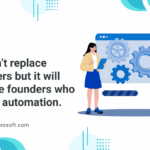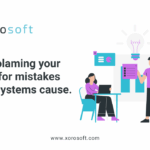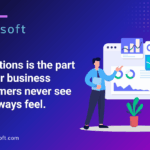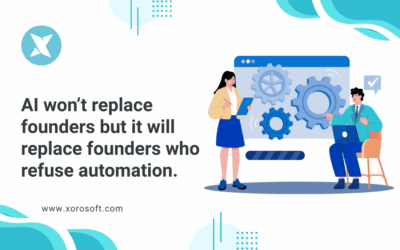
Why Ease of Use Shapes Operational Outcomes
Cloud ERP software becomes essential once fast-growing ecommerce and omnichannel brands outgrow spreadsheets and basic accounting tools. As order volume rises and operations spread across locations, internal systems often struggle to keep up. Because teams start spending more time reconciling data than managing customer experience, leaders begin searching for a more dependable operational foundation.
Although many decision-makers evaluate ERP platforms based on features, integrations, and cost, they often overlook a factor that quietly shapes every outcome: ease of use. When cloud ERP software is easy to navigate, adoption happens quickly. However, when it feels confusing or heavy, teams avoid it. As a result, they create manual workarounds, build shadow spreadsheets, and delay entering critical information.
Since the ERP becomes the operational core, usability directly influences productivity, data accuracy, and visibility. Therefore, ease of use becomes one of the strongest predictors of long-term success with any cloud ERP software platform. For this reason, Xorosoft ERP was built with a usability-first approach, allowing non-technical teams to operate confidently without relying on IT specialists.
How Usability Impacts Daily ERP Operations
Many leaders underestimate how much daily friction affects performance. Even when a system offers powerful functionality, everyday usage determines real value. Because operations require constant repetition—receiving, picking, reconciling, reporting—every extra click or confusing screen slows the process.
Legacy systems often compound this friction. Although they contain extensive features, the interfaces were built years ago and expanded without redesigning the user experience. Consequently, they introduce clutter, long navigation paths, and steep learning curves. When staff must rely on specialists to perform routine tasks, operational agility decreases.
Modern cloud ERP software solves these issues by prioritizing clarity and simplicity. Since cloud-native systems are designed for intuitive use, employees navigate them faster. Additionally, they include visual dashboards, guided flows, and clean layouts that reduce training time. Because Xorosoft ERP follows these principles, teams adopt the system quickly and maintain consistent and accurate data across departments. Furthermore, when usability increases, reporting becomes more proactive, and decision-making becomes far more reliable.
Hidden Frictions in Complex Cloud ERP Software Implementations
Operational friction often grows silently. Leaders may not see the problem immediately, yet the symptoms appear through delays, inconsistencies, and rising manual effort. Understanding these friction points helps brands avoid costly implementation failures.
Slow Adoption Creates Long-Term Inefficiencies
If users struggle during the first week, hesitation increases. Because early momentum is crucial, slow adoption often pushes teams back toward spreadsheets, which diminishes the ERP’s value.
Workarounds Turn Into Permanent Processes
Teams frequently export files, edit them offline, and upload them later. Although this seems efficient, it eventually creates inaccurate data. As a result, the ERP stops being a single source of truth.
Training Becomes a Resource Drain
When onboarding requires weeks, operational flexibility decreases. Since ecommerce and retail operations often have seasonal or shifting teams, extended training creates significant overhead.
Low Interface Confidence Slows Throughput
Unclear menus, ambiguous buttons, or long forms cause hesitation. Because users fear making mistakes, they double-check work repeatedly, which slows operations and increases lead times.
Reporting Complexity Reduces Visibility
Reports should be easy to build and update. If reporting requires advanced training or external tools, teams fall back on outdated or incomplete information. Therefore, reporting usability is essential for growth.
These hidden frictions accumulate over months and sometimes years. However, cloud ERP software that emphasizes usability, like Xorosoft ERP, prevents these problems by providing a structured, intuitive, and user-friendly environment.
How Cloud ERP Software Helped an Apparel Brand Improve Accuracy
A rapidly growing mid-market apparel brand reached a breaking point as manual processes began affecting customer experience. Because the team managed inventory through disconnected spreadsheets, stockouts and discrepancies became common. Although demand grew, operational clarity declined.
After implementing Xorosoft’s cloud ERP software, the brand experienced measurable improvements within 60 days. Order cycle time dropped from 3.1 days to 1.2 days. Pick accuracy increased from 89% to nearly 99%. Additionally, onboarding new warehouse staff required only a few days instead of two full weeks. Since Xorosoft ERP synchronized inventory across multiple locations, leadership gained reliable real-time visibility.
Although the company originally focused on advanced features, they later recognized that ease of use delivered the biggest impact. The team’s willingness to use the system daily created consistency that unlocked operational improvements across the entire company.
How to Evaluate Ease of Use When Choosing Cloud ERP Software
Selecting cloud ERP software requires more than reviewing feature lists. While functionality matters, daily experience determines adoption. Because of this, leaders should evaluate usability with practical, hands-on testing.
Test How Quickly Users Can Complete Common Actions
Ask team members to process a receiving, enter a purchase order, generate a pick list, or resolve a discrepancy. When the process feels smooth, usability is strong. Since these actions repeat constantly, small speed gains compound over time.
Evaluate Navigation Across Departments
Inventory, purchasing, warehouse operations, and accounting must interact seamlessly. Therefore, navigation across modules should feel intuitive. If users can move between tasks naturally, adoption will rise.
Simulate Real Operational Scenarios
Real operations involve exceptions such as backorders, urgent transfers, returns, or partial shipments. By testing these scenarios, leaders can see how cloud ERP software behaves under real pressure.
Review Report Creation Speed
Reports should be easy to create without IT support. When teams can build, filter, and schedule reports quickly, they remain informed and proactive.
Check Integration Flow
Because most modern brands rely on Shopify, Amazon, EDI partners, accounting systems, and 3PLs, integrations must be reliable. Xorosoft ERP offers native integrations designed to reduce set-up time and eliminate custom work.
Test Mobile and Warehouse Experience
Fulfillment teams depend on fast scanning, clean mobile interfaces, and easy-to-understand workflows. When cloud ERP software supports warehouse staff clearly, fulfillment speed increases.
Observe the Learning Curve
If team members can operate core functionality during the first session, the platform will scale more smoothly. When people explore confidently, you gain a long-term operational advantage.
Seven-Day Framework to Compare Cloud ERP Software Options
Brands can evaluate ERP systems faster with a structured, one-week plan.
Day 1: Establish Clear Operational Goals
Identify your top metrics, such as cycle time, on-time fulfillment, cash conversion cycle, or pick accuracy.
Day 2: Narrow Your Vendor List
Focus on vendors known for usability and proven cloud-native performance. Because ease of use drives adoption, this step reduces future risk.
Day 3: Run Workflow-Focused Demonstrations
Ask vendors to walk through real workflows, not high-level dashboards. This approach reveals gaps early.
Day 4: Provide Hands-On Access to Your Team
Allow team members to test real tasks without vendor guidance. Their reactions often reveal usability strengths and weaknesses immediately.
Day 5: Confirm Integration Requirements
Map connections with Shopify, Amazon, WMS, 3PLs, and accounting systems. Smooth integrations reduce ongoing costs.
Day 6: Analyze True Cost of Ownership
Include licensing, support, training, onboarding, and configuration. Since intuitive platforms reduce training time, costs decrease.
Day 7: Decide Based on Adoption Confidence
Select the platform your team feels most comfortable using. Because adoption predicts success more reliably than any feature checklist, this decision principle protects long-term ROI.
The Strategic Value of Choosing Software People Actually Use
Operational systems only create real value when teams use them consistently. When cloud ERP software feels intuitive, people move faster, make fewer mistakes, and trust the data they’re working with. Because accurate data improves every decision, usability becomes a strategic advantage—not an optional feature.
Xorosoft ERP is built around this philosophy. Its clean interface, fast navigation, and native integrations with Shopify, Amazon, 3PLs, and accounting platforms help teams work confidently across channels without relying on spreadsheets or disconnected tools.
For independent validation, you can also review Xorosoft’s Ease-of-Use ranking on G2.
If you want to see how the system works in real workflows, you can book a personalized demo through the Xorosoft demo page.
To explore core modules such as WMS, purchasing, and analytics, visit the Xorosoft ERP features page.









